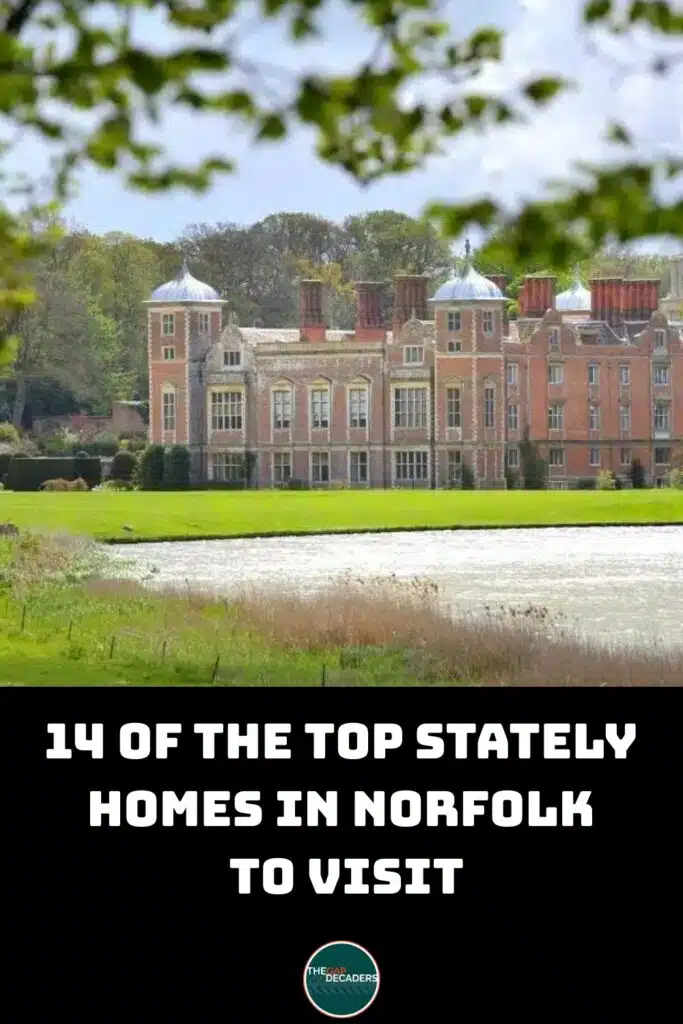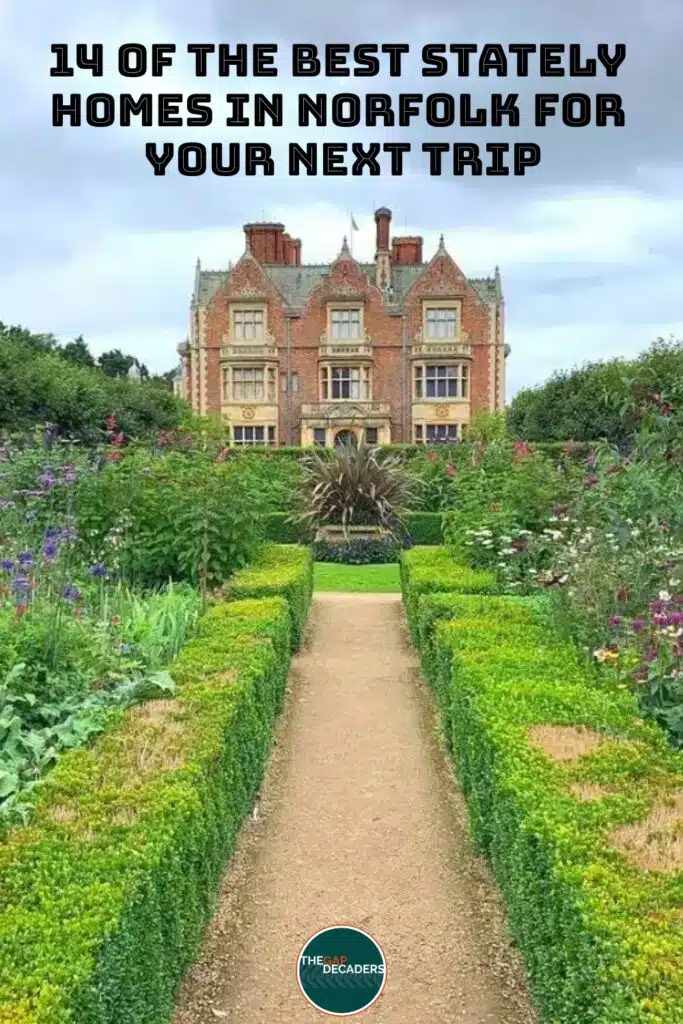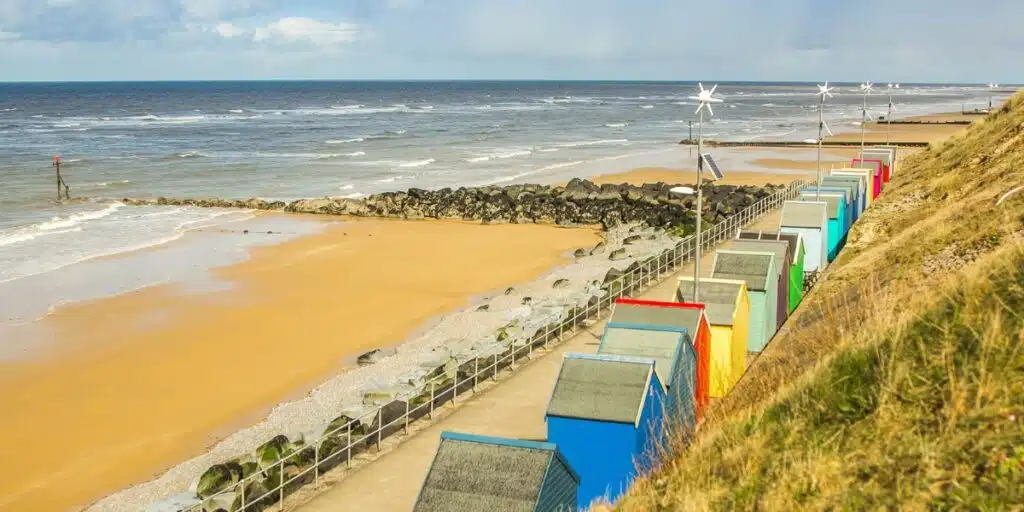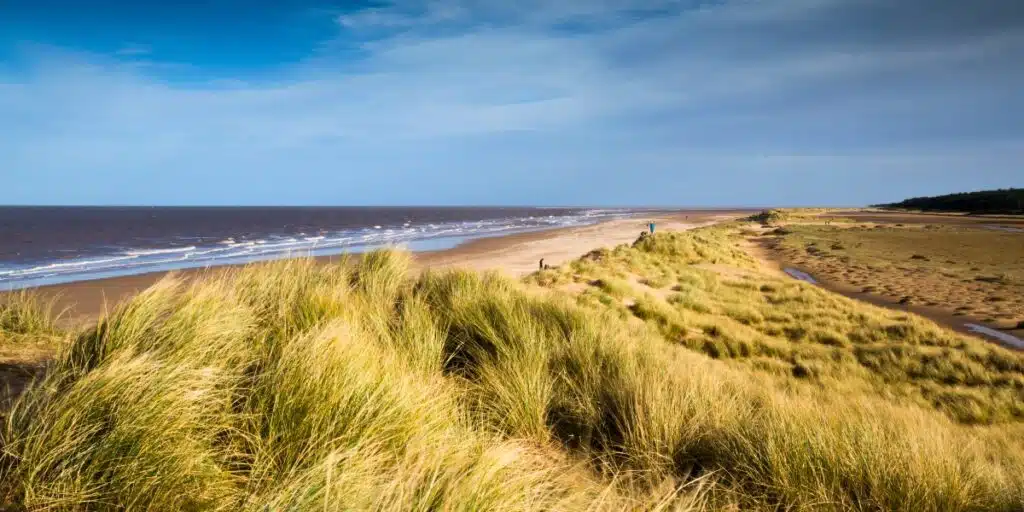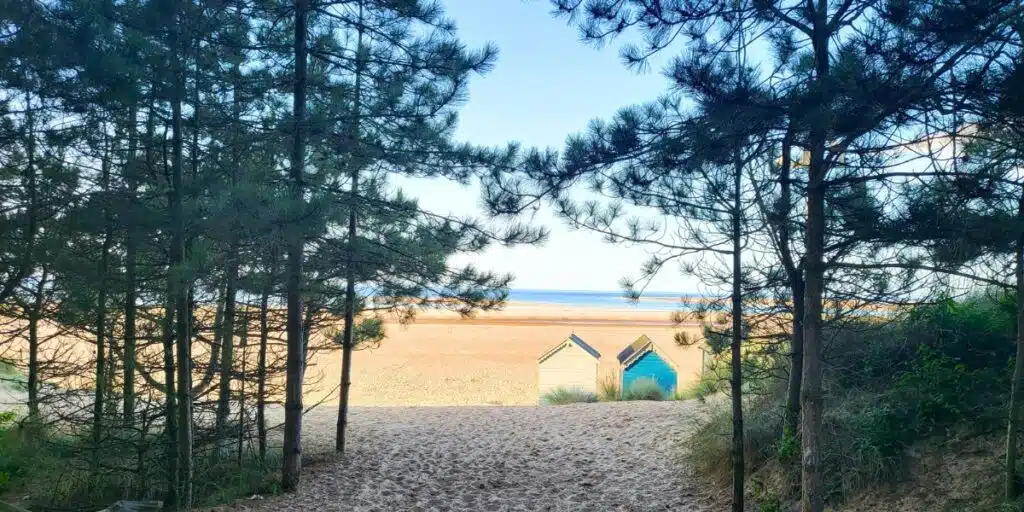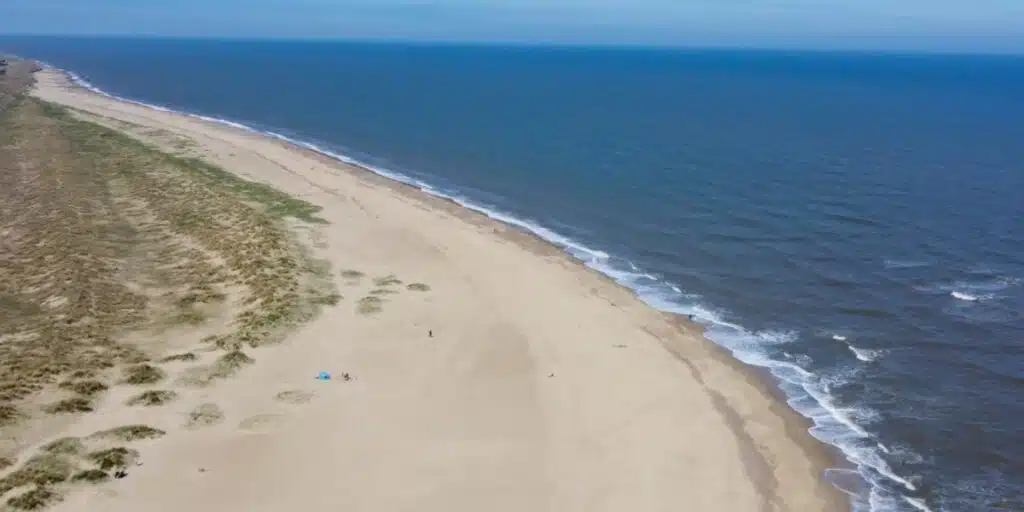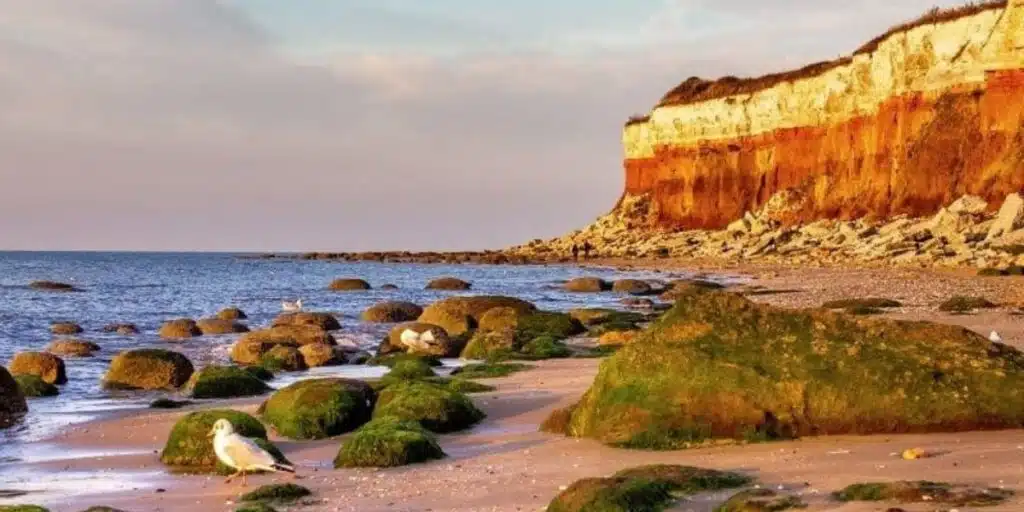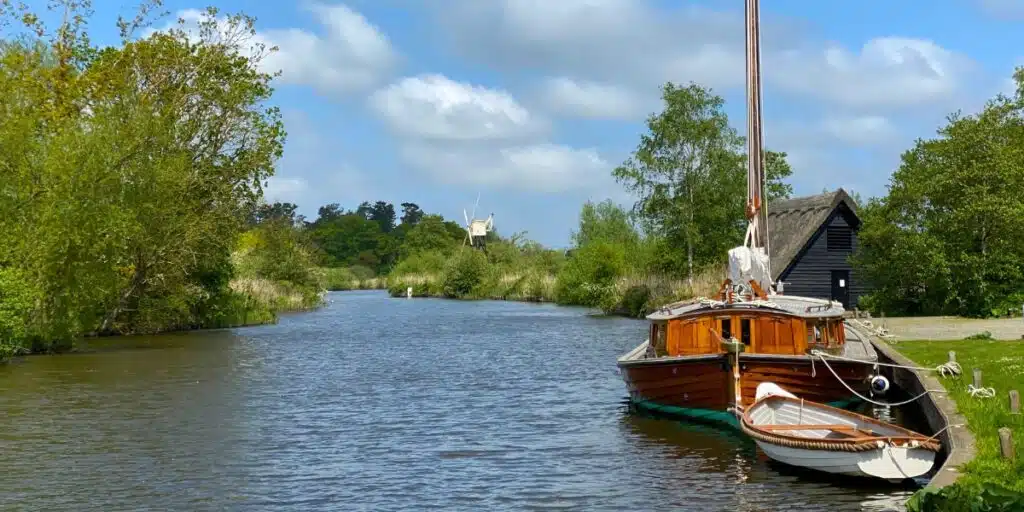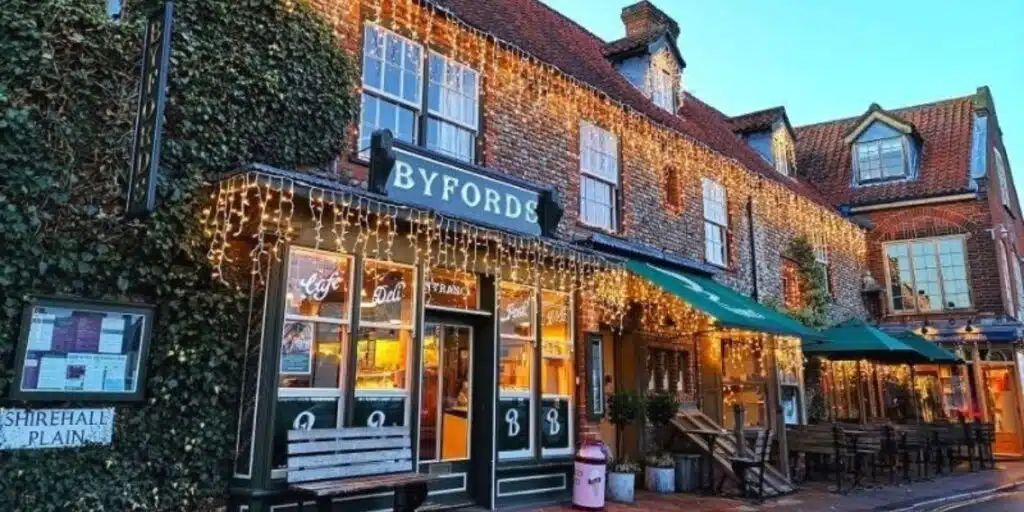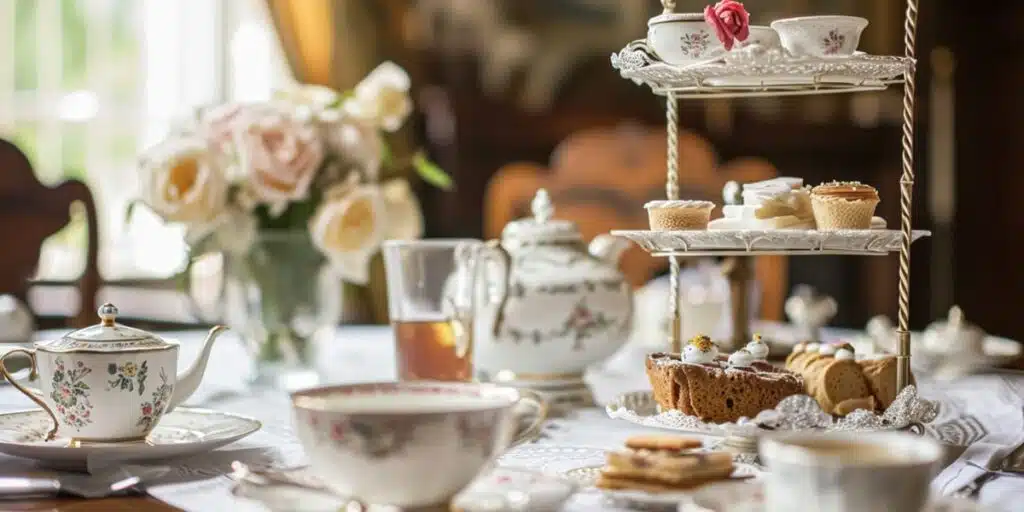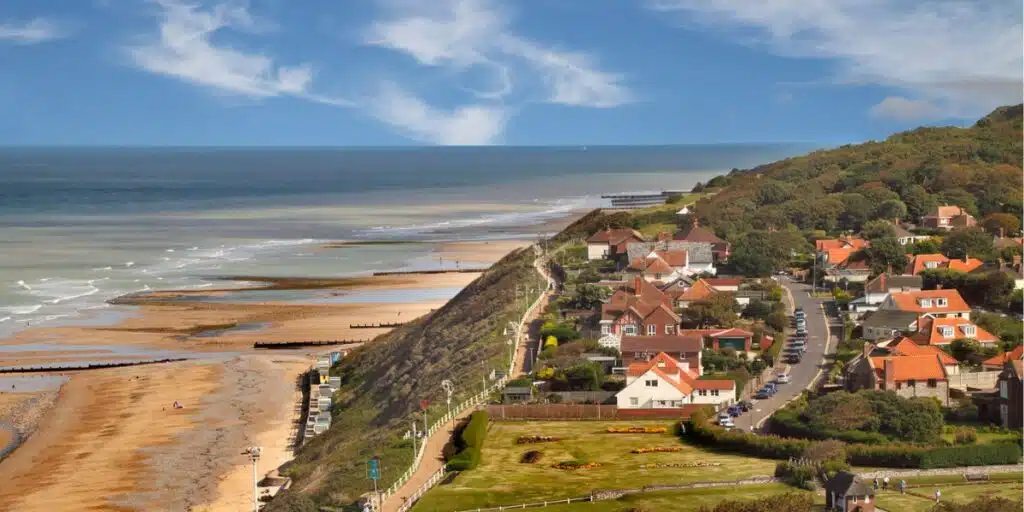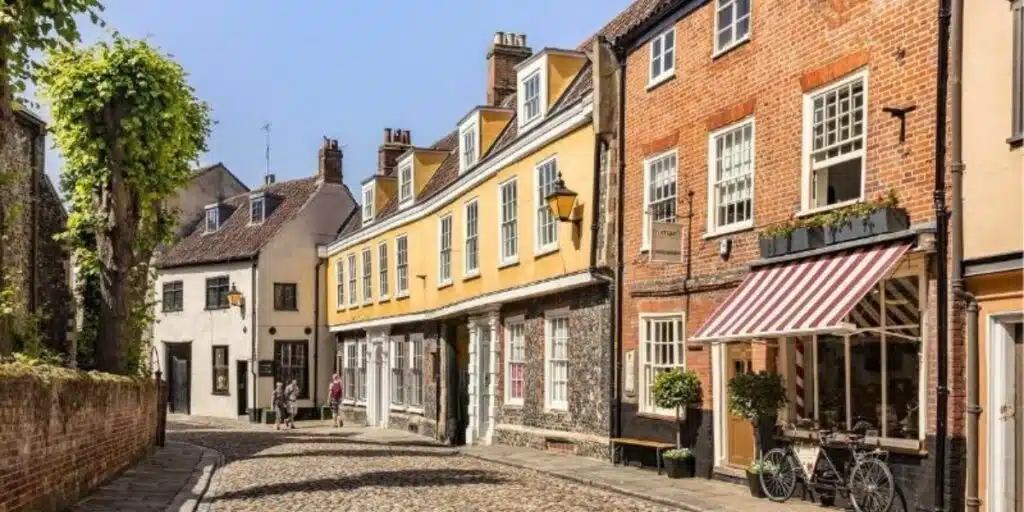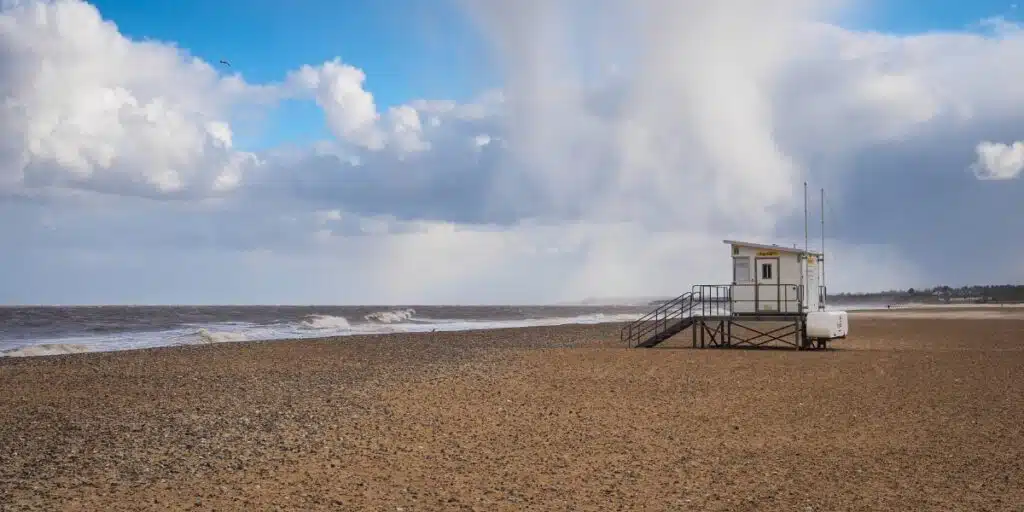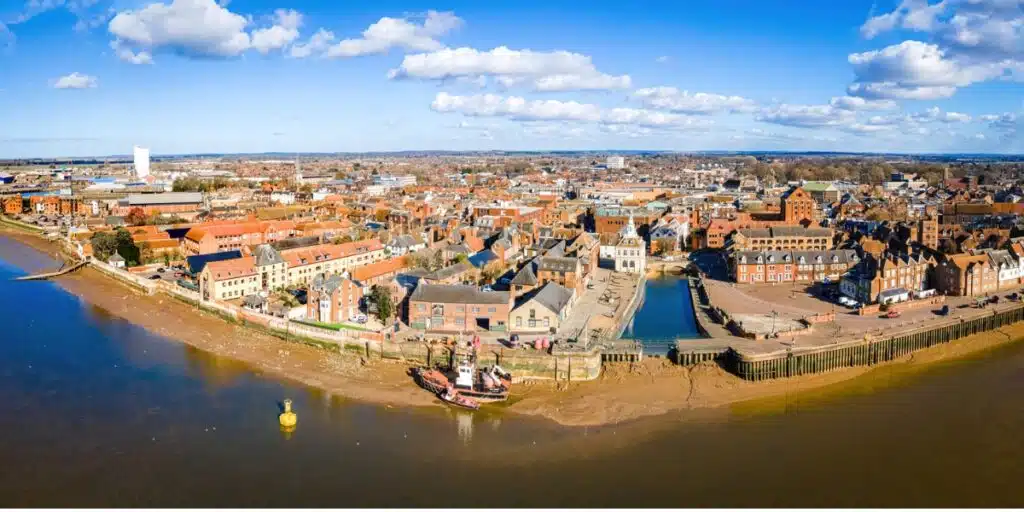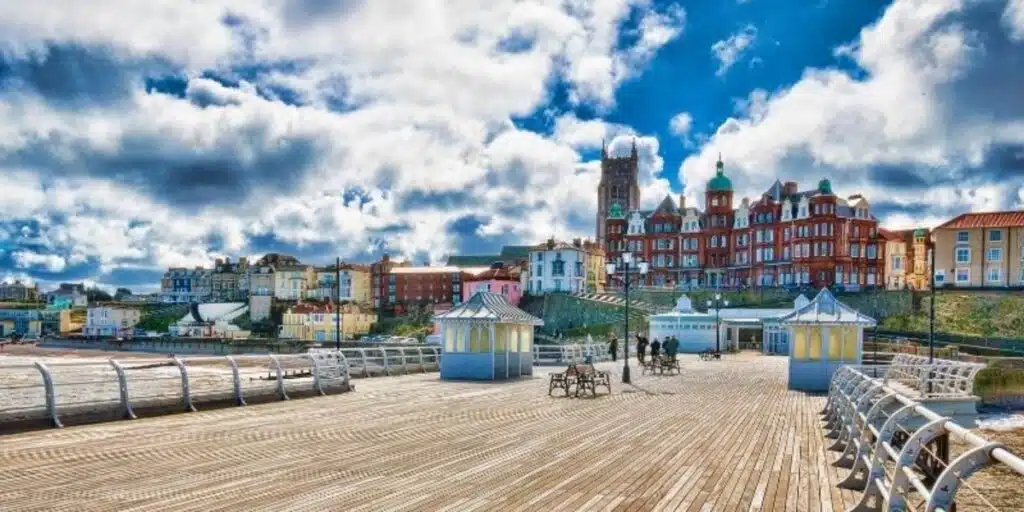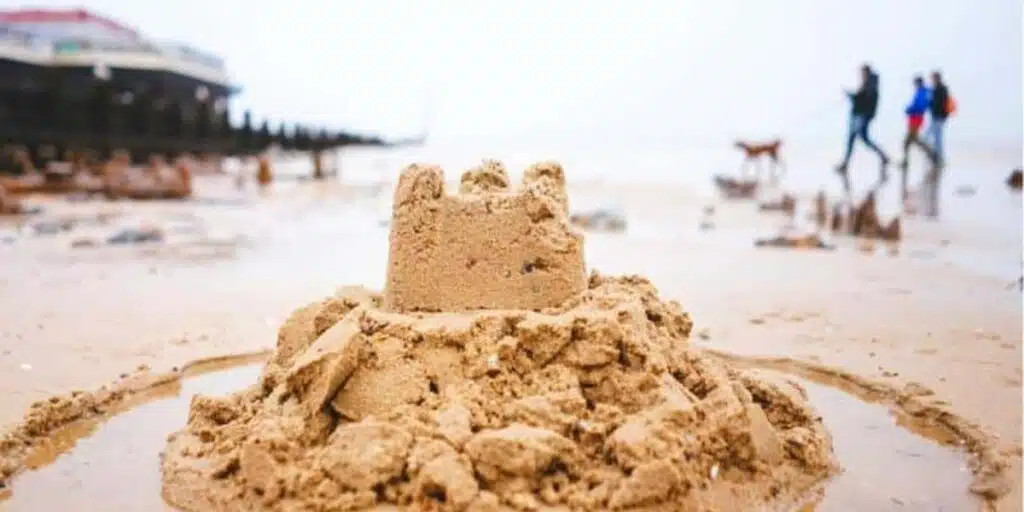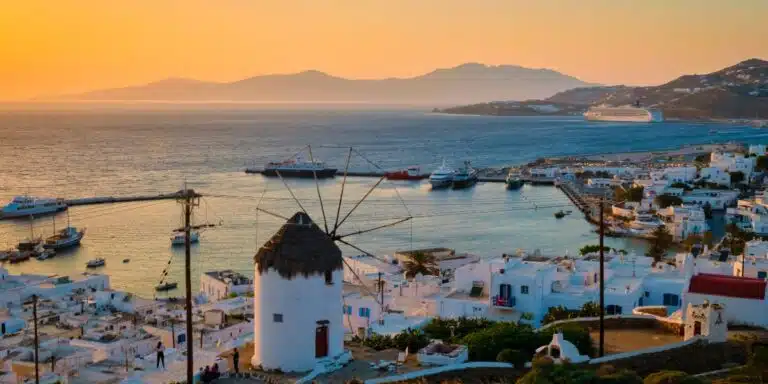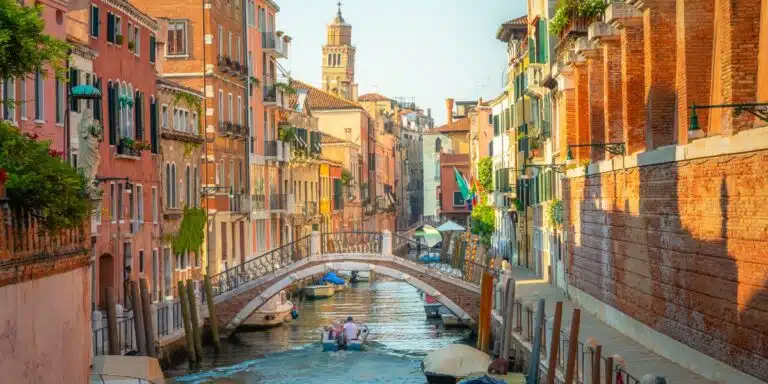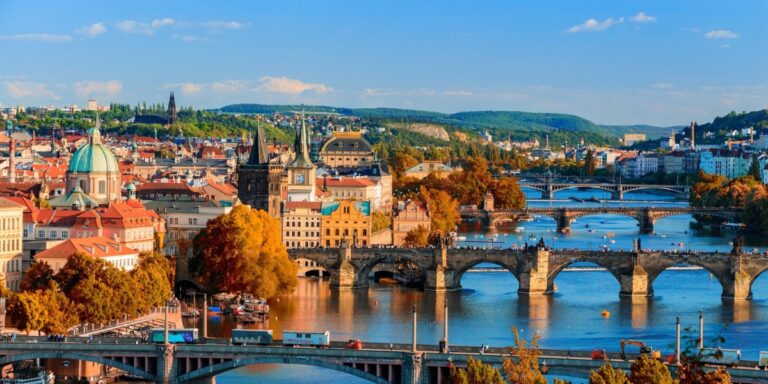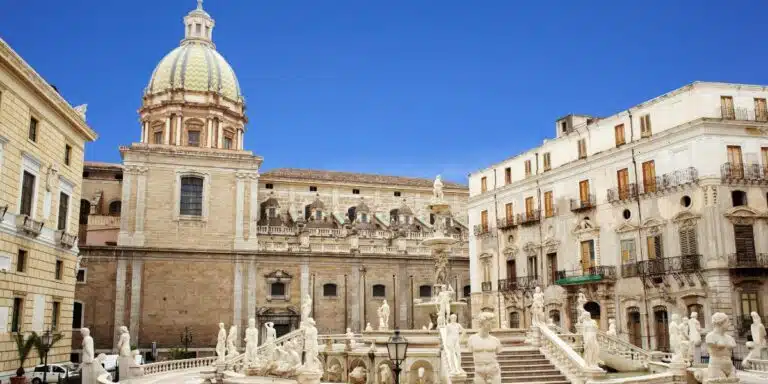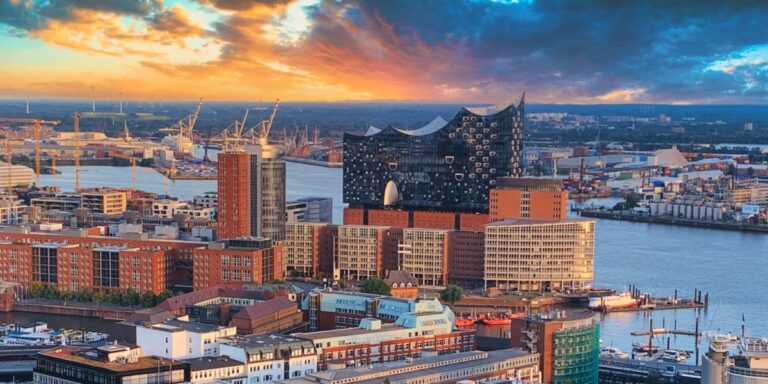This post may contain affiliate links, from which we earn an income. Click here to read our affiliate policy.
Once a county of affluent landowners, Norfolk has a rich and diverse collection of stately homes. These historic houses offer a unique insight into the story of Norfolk and the people and politics who shaped not only Nelson’s County but also the United Kingdom.
Many of them also have fabulous gardens to discover, and wider parkland, ideal for walking, running around with the kids or simply enjoying the beautiful Norfolk landscapes.
Some of the best of Norfolk’s stately homes are open to the public, meaning everyone can enjoy a slice of ‘Downton Abbey’ when they visit Norfolk!
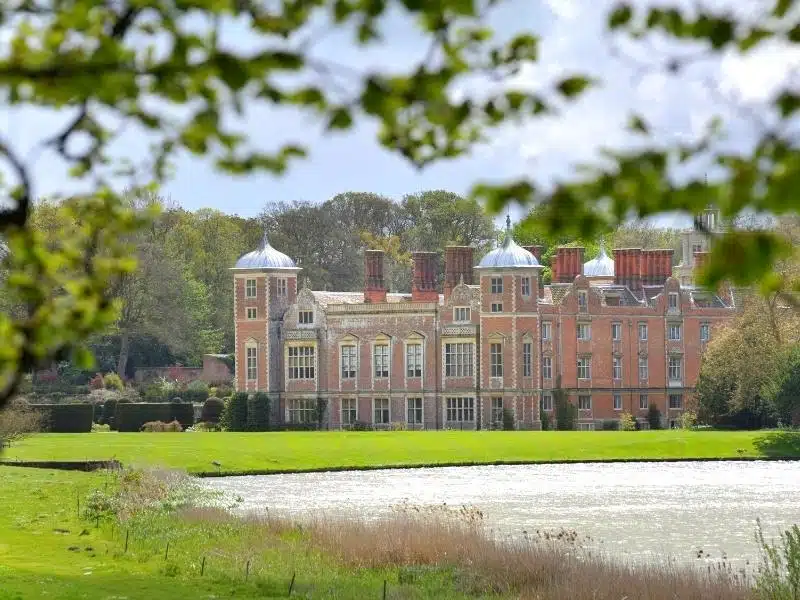
It’s important to acknowledge that some of England’s stately homes were built on the back of the worst form of colonialism, slavery.
The National Trust has released a report detailing the links its properties have to slavery, and three National Trust properties in Norfolk – Blickling Hall, Felbrigg Hall and Oxburgh Hall – were listed as being built, benefiting from, or connected to historic slavery.
You may, or may not, decide to visit these places, but whatever your choice, we should all have an awareness of the history of each historic place we visit, and not shy away from remembering what has passed, and caused so much pain to others.
A-Z of the Best Norfolk Stately Homes
If you’re looking for a stately home near you, scroll down for our map of Norfolk’s top stately homes.
Blickling Estate
The Blickling Estate, which is mentioned in the Domesday Book, is a Jacobean mansion packed full of history, with 4,600 acres of gardens and parkland to explore. In 1940, the Blickling Estate was passed to the National Trust, which is now responsible for running and maintaining the site.
The glorious 17th century Blickling Hall has been home to, amongst others, Anne Boleyn, World War II aircrew and Philip Kerr, 11th Marquess of Lothian, who was close to Churchill, and influenced many of his war decisions.
Interior rooms are styled in different periods from the Hall’s history, telling the story through paintings, antiques and the furniture used by those that lived there.
The formal gardens at Blickling Hall cover over 55 acres and include a lake, an 18th-century temple, a parterre with yew hedge topiary, four large herbaceous plots in hot and cool colours, and an Orangery, which is home to hardy citrus trees.
For four centuries, Blickling’s walled garden supplied enough produce to feed the many families who lived and worked on the estate. After falling into disrepair, the garden was restored to its full glory between 2014 and 2021 and now supplies produce to the cafes for visitors to enjoy.
The wider estate covers some 4,600 acres with 950 acres of woodland and parkland and 3,500 acres of farmland. There are marked trails around the estate and livestock grazes in the fields, including those with public rights of way running through them. If you do go walking at Blickling, make sure your dog is on a lead or under very close control.
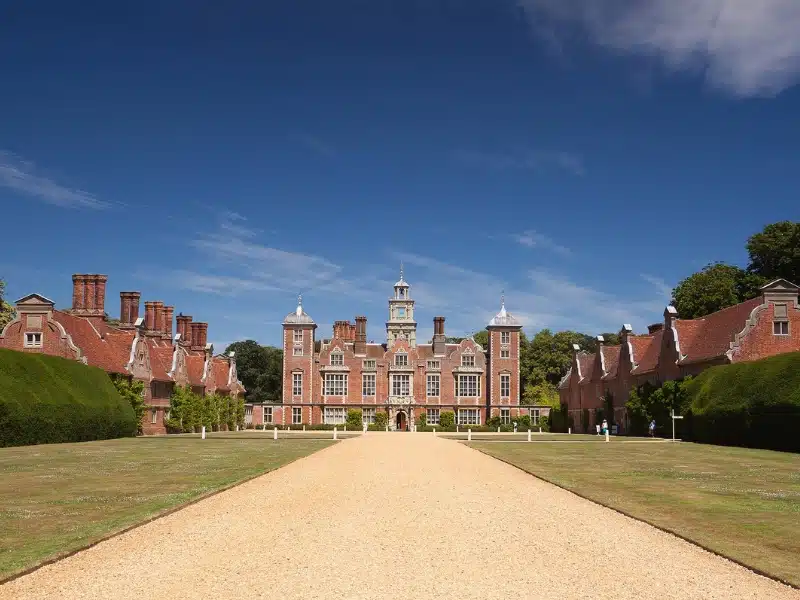
Is this your first time visiting the United Kingdom? Get all the information you need in our UK Travel Guide, including the best things to pack, the best time of year to go, getting there, and practical tips to help you have the best trip!
Felbrigg Hall
The sublime Felbrigg Hall is a 17th century historic hall and one of the most elegant country houses in East Anglia. Run by the National Trust, the unaltered house is known for its fine Jacobean architecture, stained glass windows, original features and gorgeous Georgian interior, and is one of the best stately homes to visit in Norfolk.
Outside is a colourful walled garden, considered one of the best gardens in Norfolk, an 18th-century Orangery and orchards over 500 acres of parkland, with local trails, perfect for a summer afternoon stroll.
The wider landscaped park comprises over 520 acres of woods, perfect for discovering the local flora and fauna. A number of local trails crisscross the grounds, including the Weavers’ Way, a Norfolk walking route that links the North Norfolk Coast at Cromer to the East Norfolk Coast at Great Yarmouth via the wonderful Norfolk Broads.
With nature trails, conservation projects and seasonal exhibitions, Felbrigg makes a great year-round attraction.
RELATED POST: 23 of the Best Things To Do in Cromer Norfolk
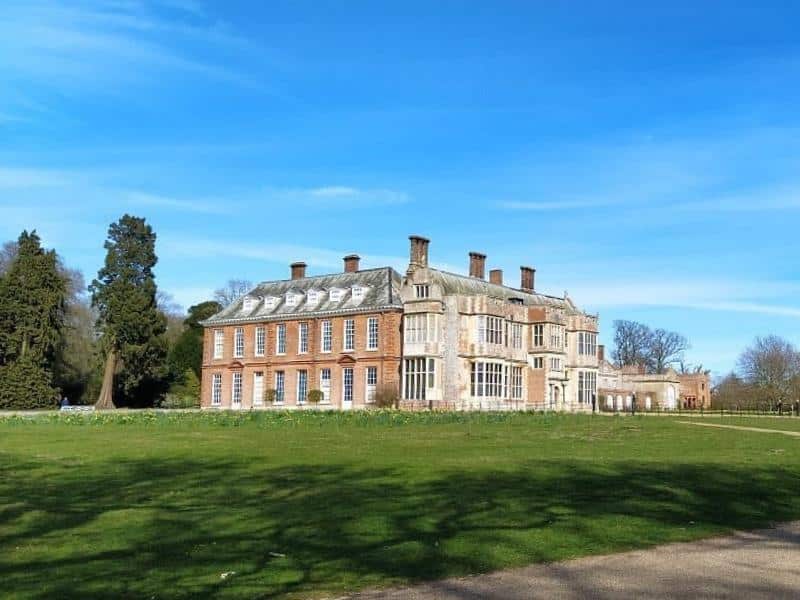
Hindringham Hall
Shortlisted for the Historic Houses Garden of the Year Award 2020, Hindringham Hall is a beautiful 16th-century brick and flint moated manor built by Martin Hastings in or around 1538. Hastings was a courtier to Henry Fitzroy, the illegitimate son of Henry VIII, and used stone from dissolved local monasteries to build the hall.
The current owners, Charles and Lynda Tucker, have created a real gardener’s garden at Hindringham. Created in an Arts and Crafts style, with secret corners, lush planting, a medieval moat, and fishponds, this wonderful, off-the-beaten-path house and garden will leave you in awe.
Hindringham has a working walled fruit and vegetable garden alongside an eclectic mix of planted areas including a Victorian nut walk, wild garden and a bog garden – there’s lots of diversity here to explore and inspire.
The formal herbaceous borders are at their best in May and June when they burst with colour, and every plant looks pristine. The working kitchen garden is in full swing in July and August, with crops picked daily and scrambling sweet peas just begging to be sniffed!
The gardens at Hindringham are open to the public on Wednesdays and Sundays throughout the summer. It is also possible to take a tour of the house twice a year.
On the ground floor, you’ll see the inside of the house and learn about its history over the past 500 years before a guided tour of its external architectural features. Pre-booking is essential.
RELATED POST: Best of the North Norfolk Coast: 20 Unmissable Highlights
Holkham Hall
A wonderful destination close to Wells-next-the-Sea, Holkham has it all. The small village boasts a stately home and estate, Holkham Hall, a beach properly known as Holkham Gap, and the Holkham National Nature Reserve. There’s a lot going on here!
One of the best stately homes in Norfolk, Holkham Hall is an 18th-century Palladian masterpiece. It has a fantastic walled garden surrounded by rolling parkland and a deer park. There’s even a woodland adventure play area to entertain the kids.
Built by the Coke family in 1764, Holkham Hall is a wonderful example of the architectural style of the day. The statuary and art collection, fascinating restored Victorian kitchen and the immense entrance hall, with deeply coved and coffered ceiling supported by towering columns and panelling of English alabaster, make Holkham one of the best stately homes in Norfolk, if not England.
Holkham Beach is simply vast and one of the best beaches in Norfolk – even in summer, you can find a quiet spot here. The windswept tidelines, miles of dunes and maze of creeks which make up Holkham’s nature reserve are ripe for exploring by intrepid adventurers – young and old alike!
RELATED POST: Holkham Beach England: North Norfolk’s Finest Beach
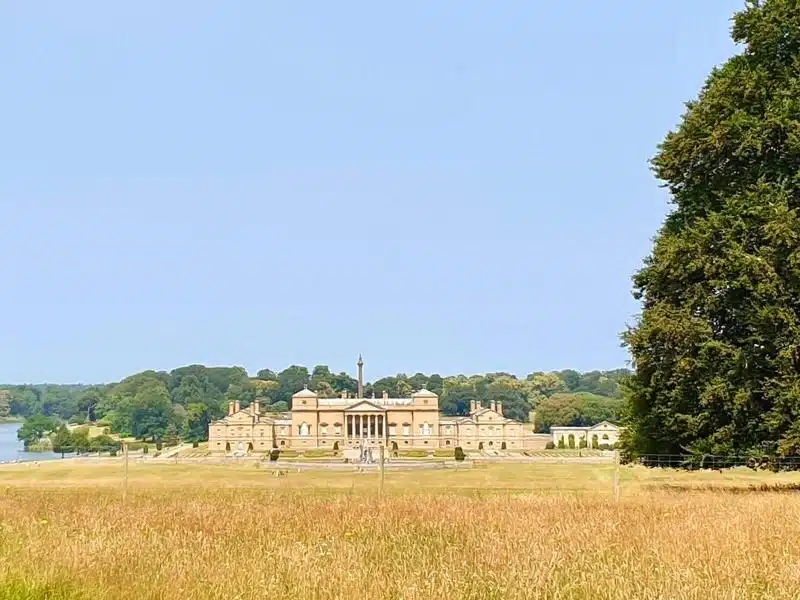
Houghton Hall
One of the gems of Norfolk, Houghton Hall was built in the 1720s for Great Britain’s first Prime Minister, Sir Robert Walpole, and is one of Norfolk’s most beautiful stately homes and one of England’s finest Palladian houses.
Houghton’s sumptuous staterooms are lavishly endowed with pictures, statuary and fine furniture. A collaboration between the two defining British architects of the time, Colen Campbell and James Gibbs, and with lavish interiors by William Kent, Houghton was designed and built to reflect the wealth, taste, and power of its owner.
Walpole also amassed one of the greatest collections of European art in Britain, and Houghton became a museum to the collection. Today, Houghton is the home of the Marquess of Cholmondeley, a direct descendant of Sir Robert Walpole.
Houghton Hall’s five-acre award-winning walled garden is a riot of colour in summer and an absolute joy to visit. The old kitchen garden has been divided into several contrasting garden ‘rooms’, including a spectacular double-sided herbaceous border, an Italian garden, a formal rose parterre and fruit and vegetable gardens.
Elsewhere in the parkland surrounding Houghton Hall, you’ll find the contemporary Sculpture Park, showcasing the work of world-renowned artists.
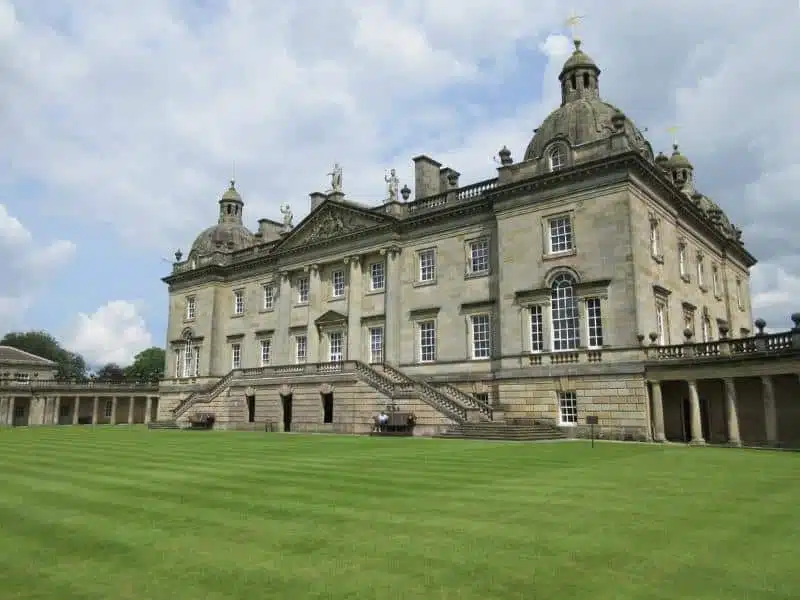
Hoveton Hall
Located on the edge of the beautiful Norfolk Broads National Park near Wroxham, Hoveton Hall Estate is idyllic. Built between 1809 and 1812, the Regency house and estate have been handed down through the Buxton family since 1946 and remain their private residence.
First planted in the early 19th century, Hoveton Hall Gardens are a delight throughout the seasons. In springtime, the grounds are carpeted with hundreds of different varieties of snowdrops and daffodils, some of which are very rare.
May and June see the spectacular colours of the azaleas and rhododendrons take centre stage, closely followed by the perfect manicured lawns and glory of the formal herbaceous borders, featuring over 600 plant varieties, in July and August.
In the wider parkland, there is an ice well, woodland walks, the magnolia garden, and a lake lined with weeping willows.
The gardens are open between April and October and are a must-visit Norfolk attraction. Regular events take place, including open-air theatre performances and country fairs.
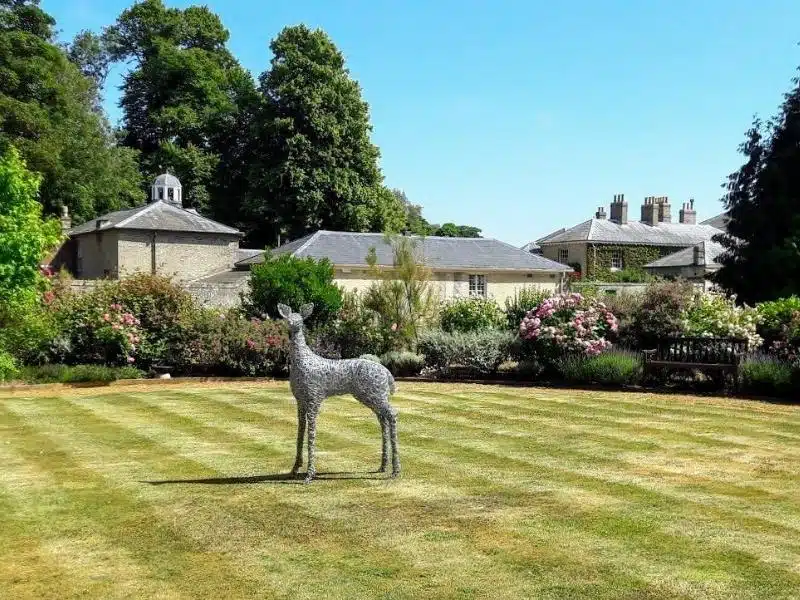
Mannington Hall
Mannington Hall is a Grade I listed country house surrounded by a medieval moat, located close to the village of Itteringham in Norfolk. Since the 18th-century, this charming estate has been owned by the Walpole family, which also owned Wolterton Hall and Houghton Hall.
The Hall is closed to the public, but the estate has many country walks and trails that are freely available. As part of the Paston Footprints 600 project, a cycle route has been developed starting and finishing at the Hall.
The gardens and estate are open on Thursdays, Fridays and Sundays during summer. Walpole’s Kitchen, formerly known as the Garden Tearooms, delivers simple, elegant and honest food packed with bags of flavour.
RELATED POST: Things to Do in Norfolk: 37 of the Very Best Attractions
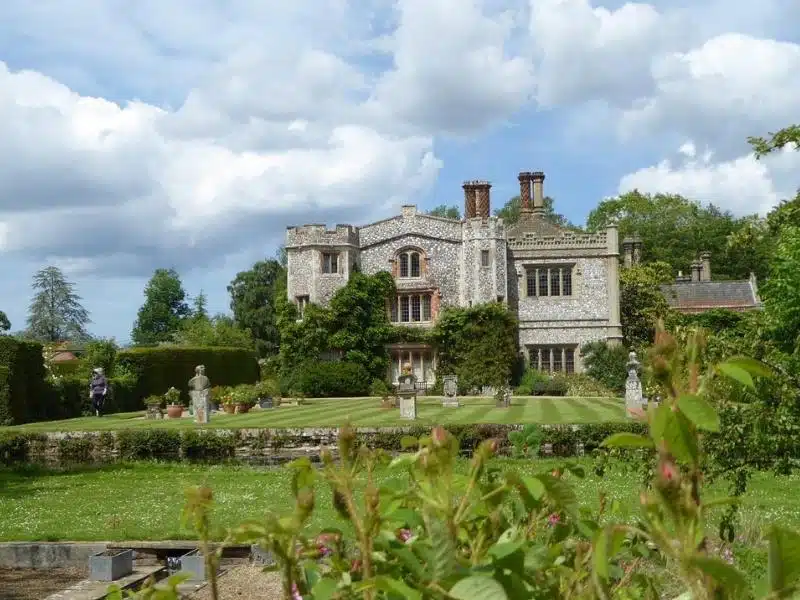
More Norfolk Travel Ideas
Oxburgh Hall
Run by the National Trust, Oxburgh Hall is a 15th-century moated manor house built by Sir Edmund Bedingfield, whose ancestors still live there today. The house consists of four domestic buildings around a courtyard, built from honeyed stone and contained within a wide moat.
During the English Civil War, the family experienced turbulent times. Supporting the Royalist cause led to Sir Henry Bedingfield’s imprisonment in the Tower of London, one son’s wounding, and another’s forced to flee abroad. Parliamentarian troops ransacked the Hall and destroyed the gardens.
Today, Oxburgh Hall highlights include the King’s Room, where Henry VII stayed in 1487, and needlework hangings created by Mary, Queen of Scots while she was held in custody by the Earl of Shrewsbury.
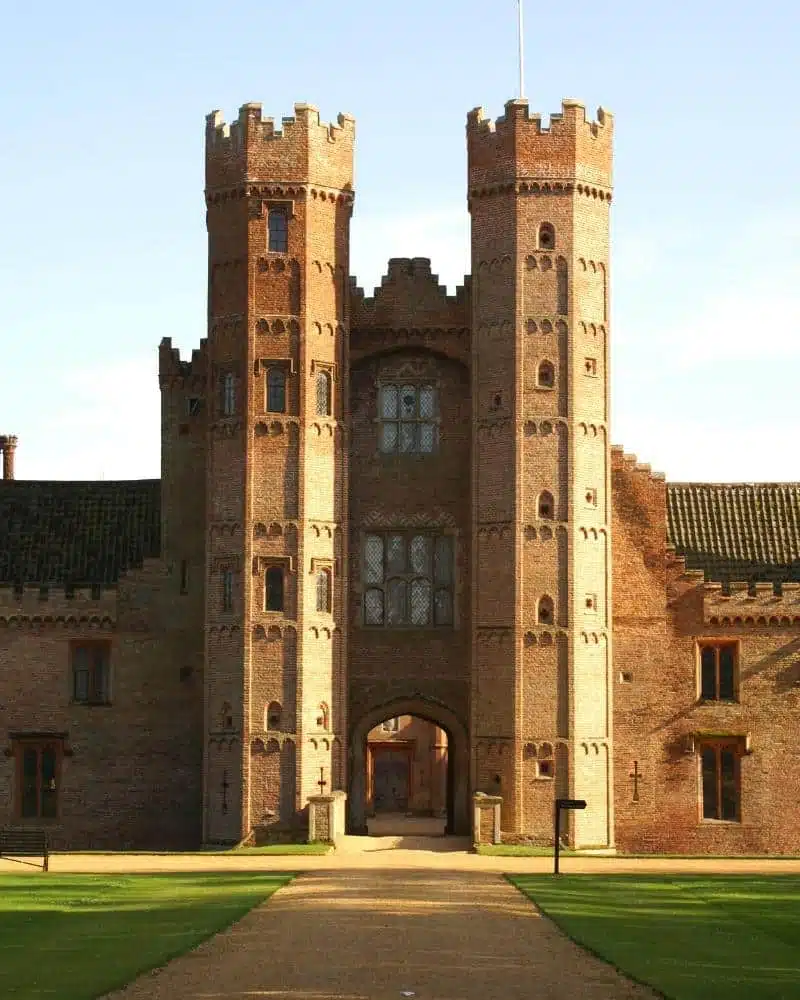
Raynham Hall
Raynham Hall in West Norfolk is the seat of the Marquesses Townshend. The building of the Hall was started in 1619 by Sir Roger Townshend and his Master Mason, William Edge. The house was modernised a hundred years later for the second Viscount Townshend, and it is essentially that house which stands today.
Raynham Hall is also famous as the location for one of the most famous ‘spirit photography’ images of all time, that of the Brown Lady of Raynham, which was captured by Country Life photographers 85 years ago.
Raynham is not generally open to the public, but the present Lord and Lady Townshend have created a Restoration Fund for individual projects and items in the collection. They also open the house every year to a series of Recitals in the Marble Hall and several Open Days, during which you can enjoy a tour of the house.
Family portraits and antique furniture are on view in the seventeen rooms on show for the tour, which lasts for about 90 minutes and is guided by Lord or Lady Townshend, depending on the numbers. Find out more here.
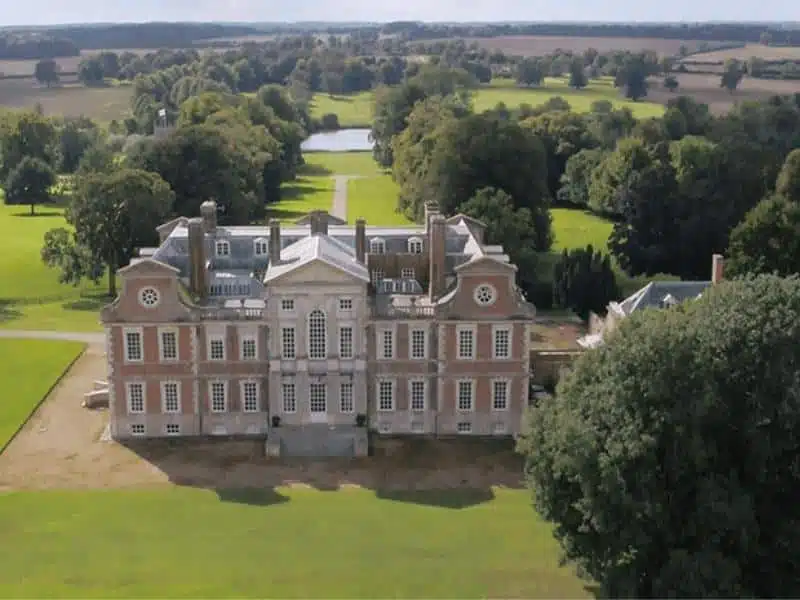
Sandringham Estate
Sandringham, a 20,000-acre estate in the Norfolk Coast Area of Outstanding Natural Beauty, is where King Charles retreats with the royal family for Christmas and was reportedly the late Queen’s favourite home. Nearby, the Duke and Duchess of Cambridge, aka Wills and Kate, also have their home, Anmer Hall.
You can visit the house, gardens, parkland, and St Mary Magdalene Church in a day, with many of the ground-floor rooms of Sandringham House remaining as they were in Edwardian times.
The gardens are beautiful, and the parkland and woods surrounding the house are great spots for dog walking, family activities, and picnics.
The more expansive Sandringham estate holds regular events, like craft markets, farmers markets, flower shows, winter light shows and Christmas fairs.
RELATED POST: Best Things to Do in King’s Lynn: Top Attractions & Highlights
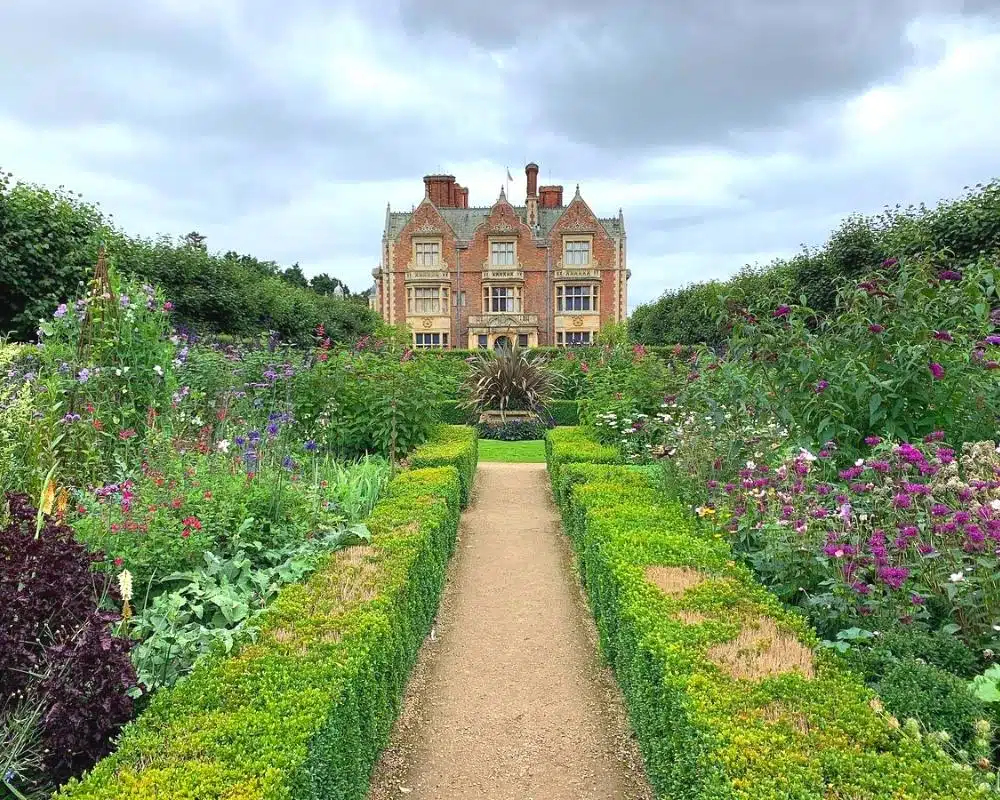
Somerleyton Estate
OK, Somerleyton Hall is not actually in Norfolk, but it’s only 1.4 miles from the border as the crow flies, so I had to include it!
At the heart of the estate is Somerleyton Hall, one of Suffolk’s finest Victorian stately homes. The Jacobean Manor house was designed by John Thomas, sculptor and architect to Prince Albert.
The hall is currently the family residence of Lord and Lady Somerleyton and is closed to the public. However, you can enjoy the exterior architecture as you explore the twelve acres of magnificent gardens.
From the sublime formal parterre, the fragrant white garden and the challenging maze to the shady arboretum, wonderful walled garden, and beautiful rose garden, this is the perfect spot for a summer’s afternoon.
RELATED POST: 24 of the Best Things To Do in Great Yarmouth
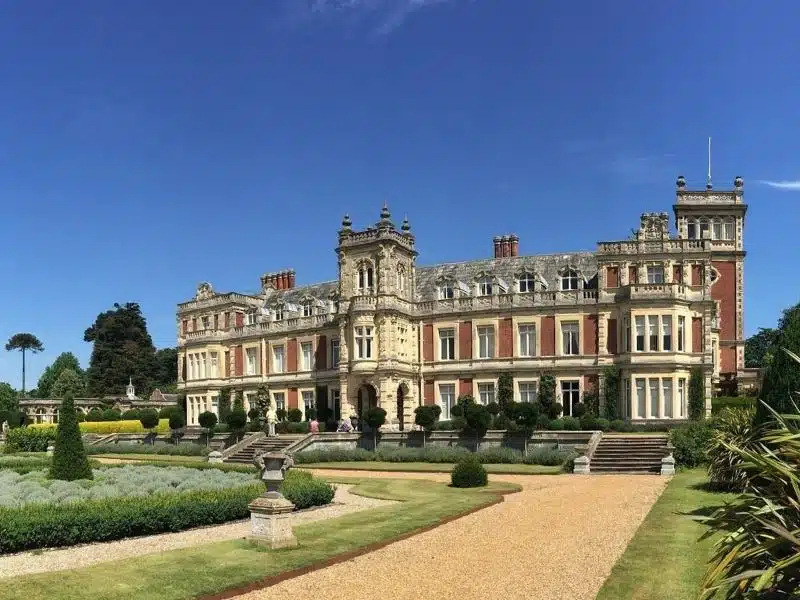
Voewood
Also known as Home Place, Voewood, is a stunning Arts and Crafts style house near Holt, designed by Edward Schroeder Prior. It is a Grade II* listed building, and the gardens, also designed by Prior, are Grade II* listed in the National Register of Historic Parks and Gardens.
Voewood is considered one of the greatest achievements of house design in the Arts and Crafts movement and, more than almost any other building of the period, Voewood fulfils the ideals for the simple but thoughtful architecture of the period.
If you want to see Voewood, you’ll have to book the house as a venue for a (very) special occasion or wedding or wait for the next Voewood Festival, an occasional series of events in the house and gardens that includes live music, literary talks, and rare book fairs.
Wiveton Hall
Wiveton Hall is such a wonderful place to visit – if anyone’s coming for a long Norfolk weekend, we head here! Set between the Norfolk coastal towns of Blakeney and Cley-next-the-Sea, Wiveton is a Grade II country house with a fascinating history – as well as being the star of the BBC2 show ‘Normal for Norfolk’!
The flint-fronted Jacobean mansion was built in 1652, but the remains of an older building on the grounds are thought to date back to 1280. Since then, the hall has changed hands numerous times, until the family who restored the hall and farm the land today bought it.
There is a farm shop that sells lots of lovely local food and Norfolk produce and has a pick-your-own area. Alongside is the fantastic cafe, which serves amazing home-cooked food made with local ingredients. Both are situated with a view over the marshes to the sea, making it a lovely spot for afternoon tea.
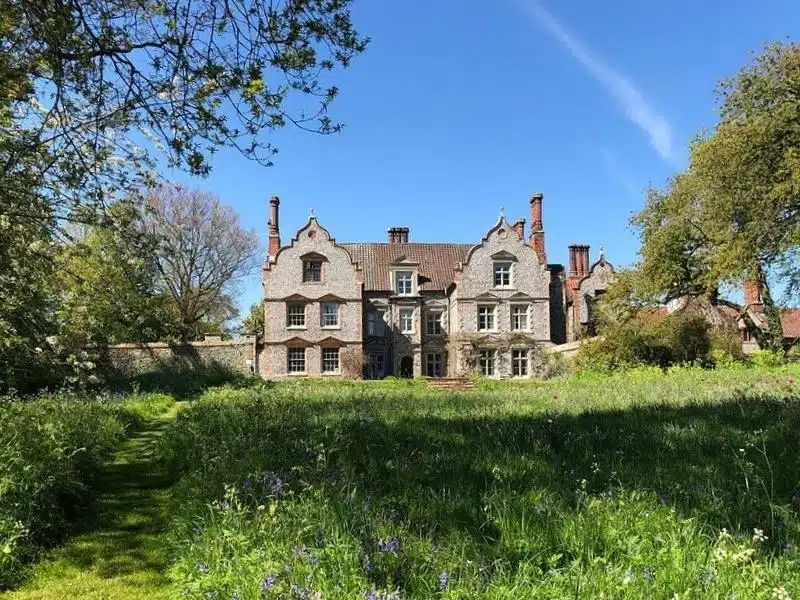
Wolterton Park
The Georgian Wolterton Hall was one of the four ‘Power Houses’ stately homes of North Norfolk, along with Holkham Hall, Houghton Hall and Raynham Hall. The Palladian Hall was completed in 1742 by Horatio Walpole (namesake and godfather to Lord Horatio Nelson) and the brother of Britain’s first Prime Minister, Sir Robert Walpole.
The estate remained within the Walpole family until 2015, when the hall and 500 acres of land were sold.
Since then, Wolterton Hall has undergone extensive renovations to create a wonderful, award-winning place to hire and stay for celebrations or special events. The interior of the hall has retained its period features and provides guests with period luxury accommodation and facilities.
You can book the entire Hall, the East Wing and various smaller houses and cottages around the estate – this is a holiday rental par excellence!
Stately Homes Norfolk Map
How to use this map – Use your fingers (or computer mouse) to zoom in and out. Click or touch the icons to get more info about a place, and click the arrow in the box top left to open the index. To add to your own Google Maps account, click the star next to the title of the map.
Are you looking for more destination ideas? Check out these top posts…
13 Best Greek Islands You Have to Visit!
One Day in Venice: Best Itinerary, Map, Tips & Guide
The Best Prague One Day Itinerary + Map, Tips & Guide
Plitvice Lakes National Park: A Complete Guide to Croatia’s Top Attraction
One Day in Palermo: Best Itinerary, Map, Tips & Guide
Hamburg in One Day: The Best Itinerary + Map & Travel Tips
Love it? Pin it!
